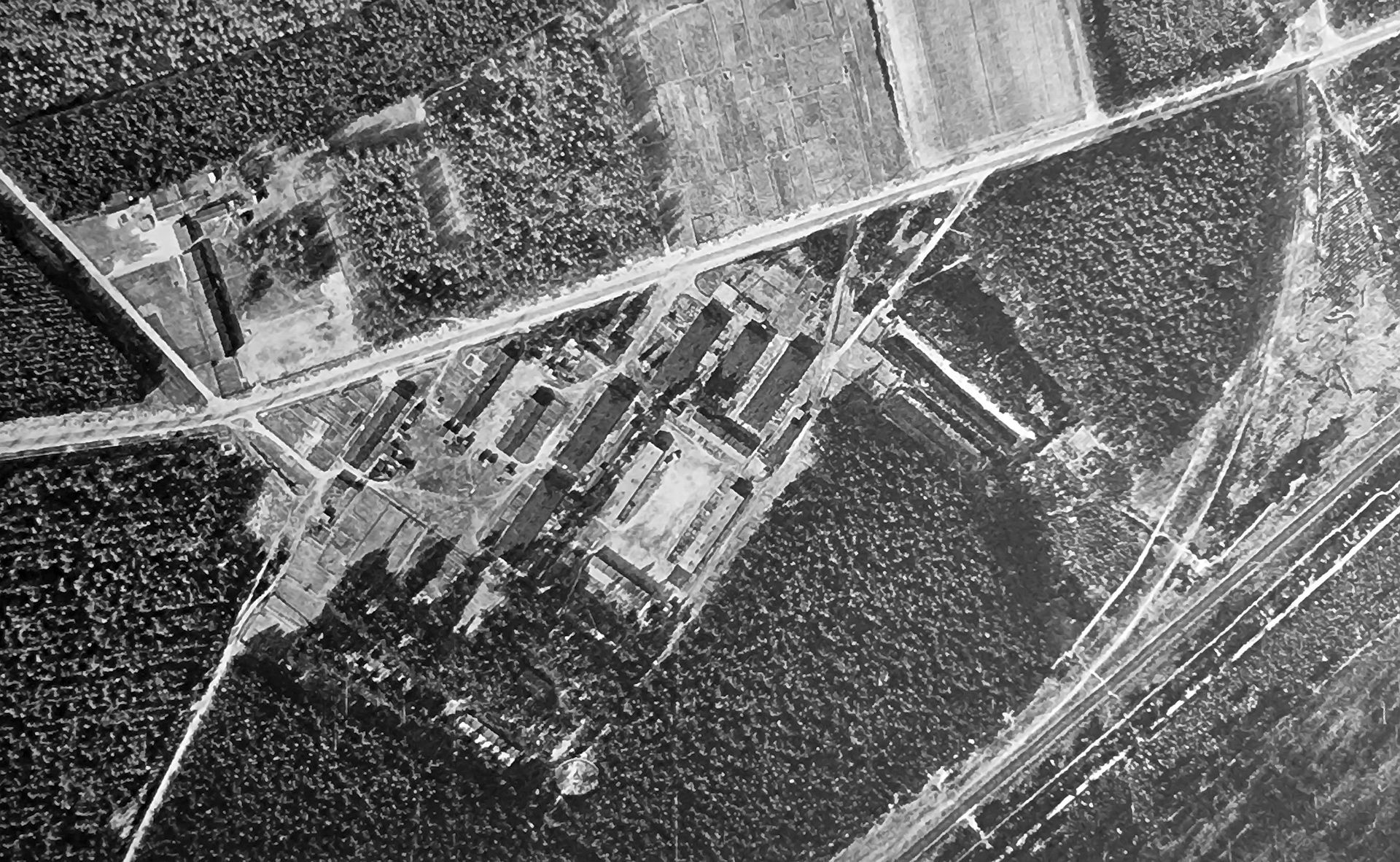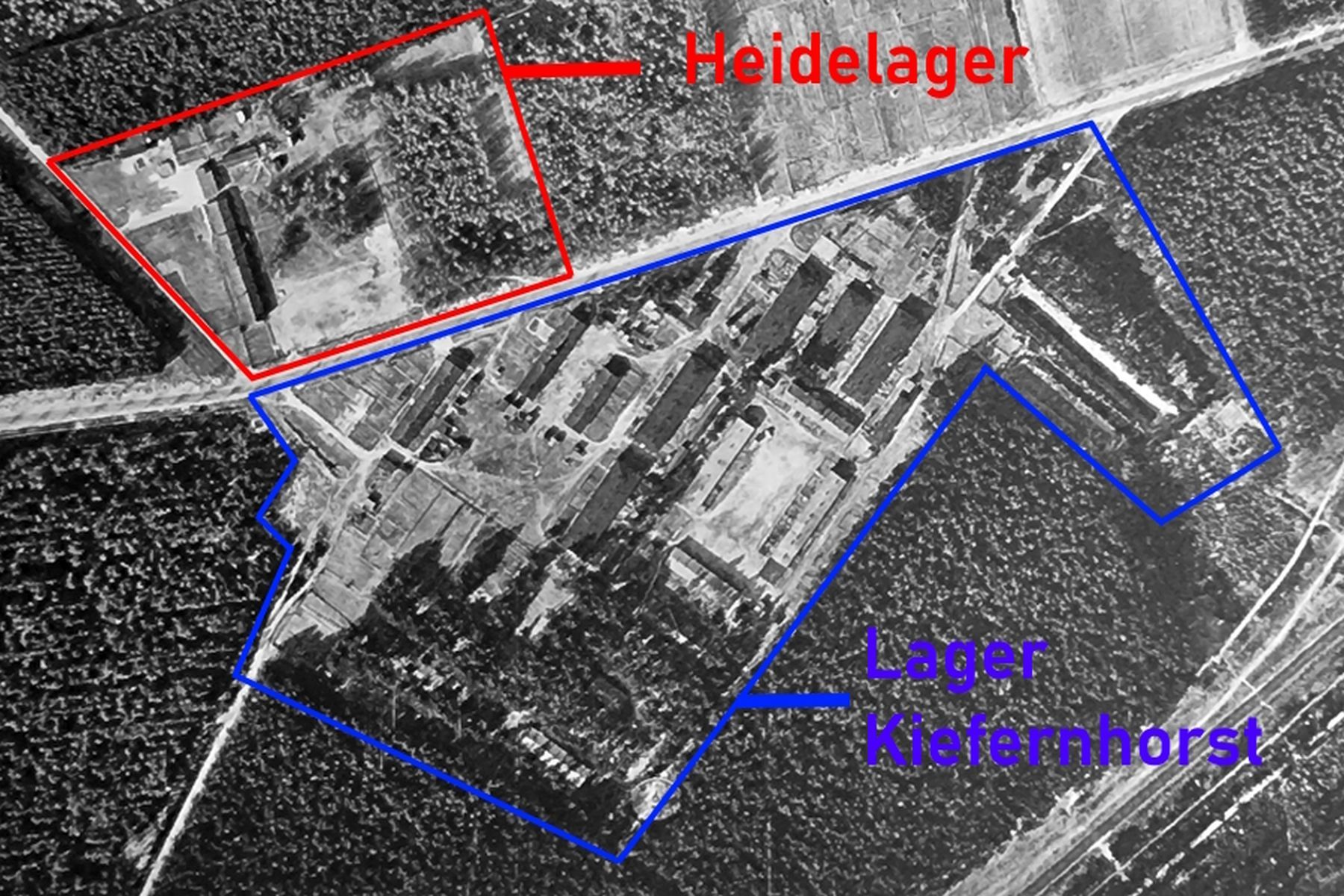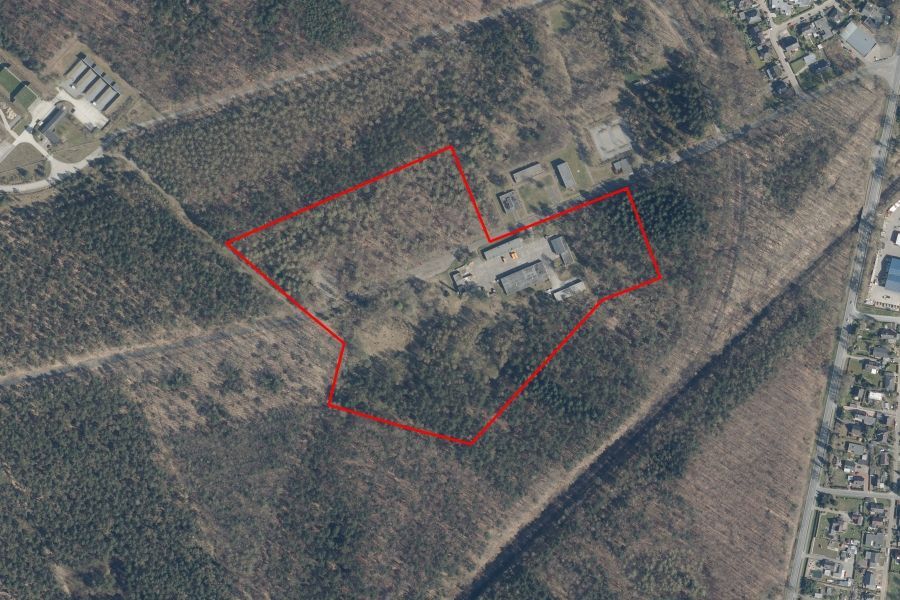
In 1937, the German Navy built a camp east of Franzenburg, initially with six barracks, which was given the name "Heidelager". It was located north of the naval interdiction weapons arsenal, which was then under construction, on the road between Altenwalde and Oxstedt. It was put into operation in the same year and used as a prison camp for marines who had committed crimes. In 1939, however, it was closed down again and used from then on to train recruits. From 1940, five more large and two smaller barracks were built on the south side opposite the road to Oxstedt, which were directly part of the naval interdiction weapons arsenal. It housed mainly foreign and forced laborers. Due to the many black pines planted for camouflage, this camp was given the name "Kiefernhorst". In 1944, training for non-Reich Germans, especially volunteers from southeastern Europe, was carried out there. At the same time, around 180 interned civilian workers from the Netherlands, Belgium and Croatia were housed in the "Heidelager" opposite. Until the end of the war, the "Kiefernhorst" camp consisted of around 25 buildings, mainly barracks. After the war, the English used the accommodation to house the German service personnel for "Operation Backfire" and members of the "GSMA". After the last employees of the British occupation forces had left, almost 600 refugees from the occupied eastern territories moved into the camp, which continued to be called "Kiefernhorst". The settlement was gradually expanded and small businesses such as carpenters, a corner shop, fruit and vegetable sellers, shoemakers, etc. settled there. A school was even built in one of the barracks, in which the "camp children" were taught. The "Heidelager" opposite was gradually dismantled. From 1961 onwards, the residents were permanently relocated because the German army needed the site to build what would later become the Oxstedt naval ammunition depot. It was put into operation on January 8, 1963.
To the north of the road to Oxstedt was the "Heidelager". To the south of it was the later expanded Kiefernhorst camp.
Source: Gerd Wildfang, MB.






